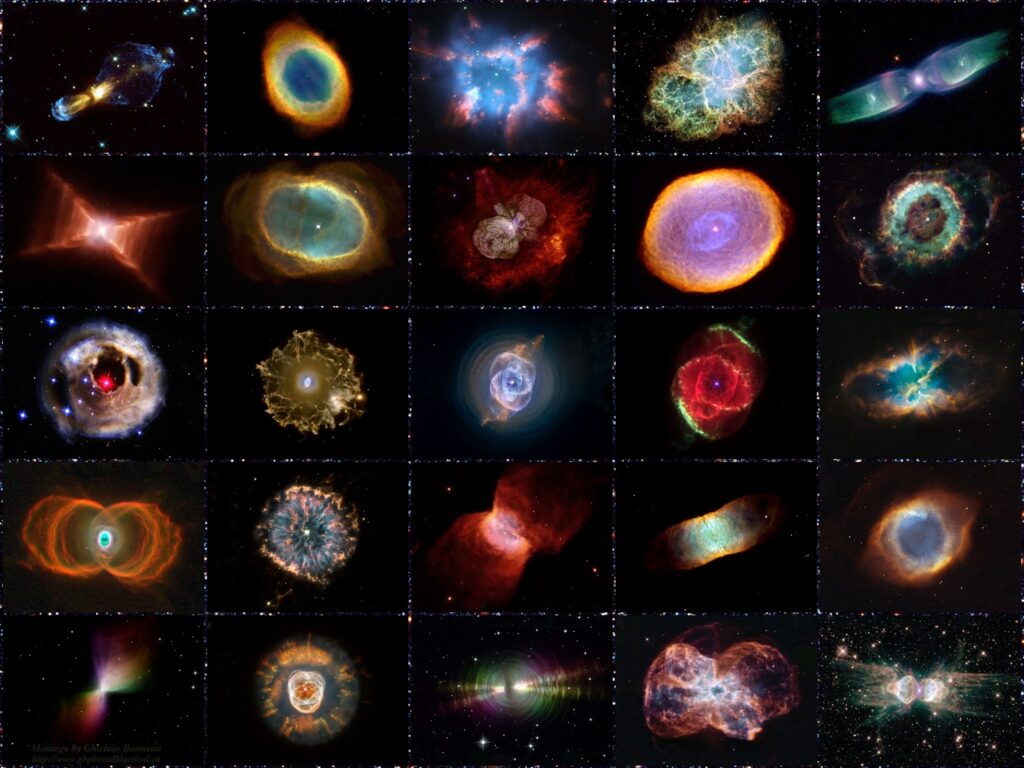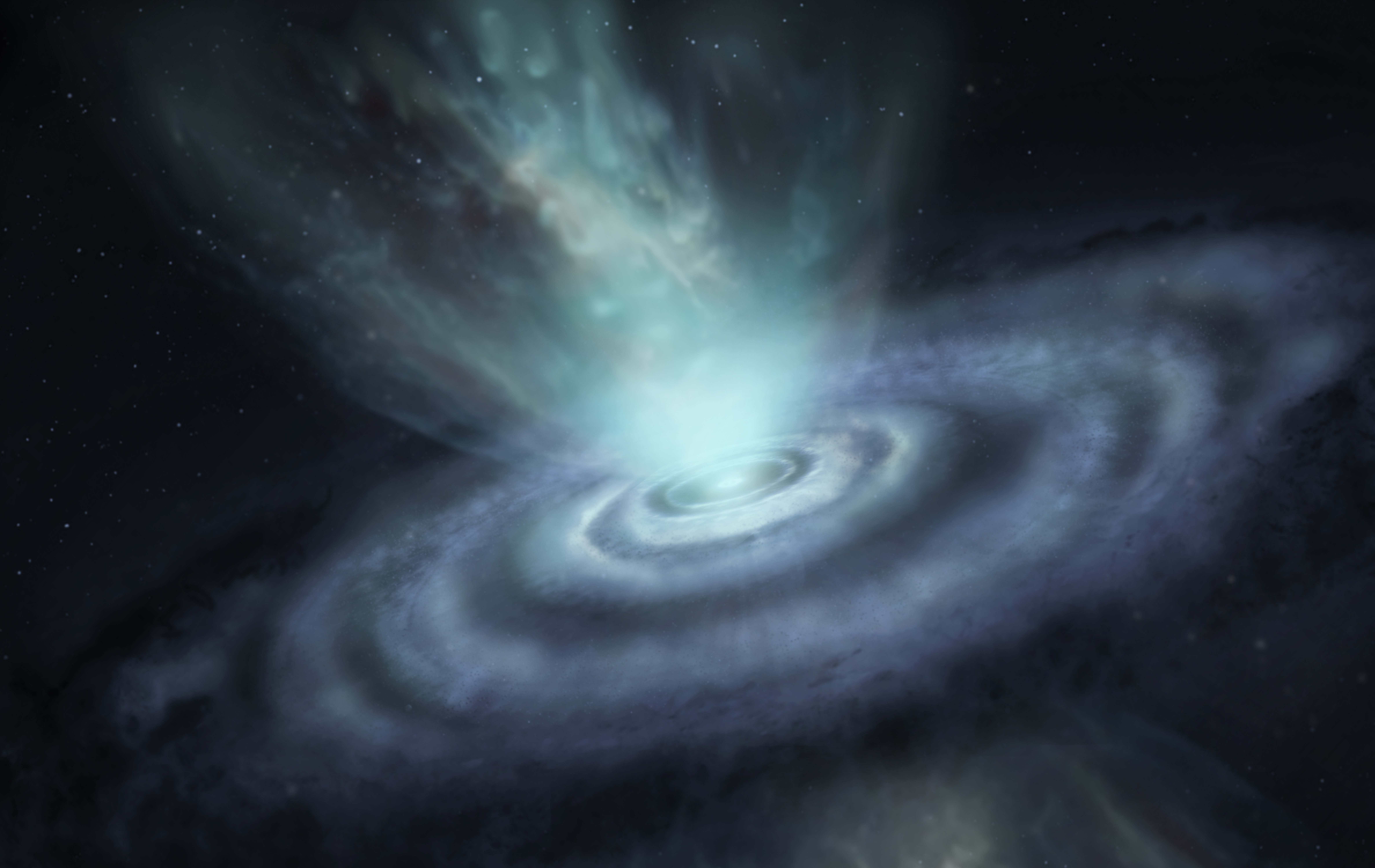
One of the scientific ideas we find ourselves stating pretty regularly around here is that stars with a mass not too different from our Sun will eventually exhale their atmospheres as planetary nebulae, forming a fabulous structure that is likely spherical or hourglass-shaped. The evolutionary phase where this mass loss really kicks in is called the Asymptotic Giant Branch or AGB, and these elder red giants are massive, low-density, mass-losing beasts.
The shapes of planetary nebulae come from the material being blown off in spherical winds from the entire star and, in some cases, being pinched off where a disk of planets or other materials prevents material from expanding. This simple model explains both the basic spherical or hourglass shapes and allows for the variety of structures we see to be the result of the material coming off in puffs and being shaped by binary companions and planets that have evolving orbits.
But as much as we like our nice simple model, sometimes it just doesn’t hold up, and new observations of one star, V Hydrae, don’t want to fit our model at all. As researcher Raghvendra Sahai puts it: Our study dramatically confirms that the traditional model of how AGB stars die—through the mass ejection of fuel via a slow, relatively steady, spherical wind over 100,000 years or more—is at best, incomplete, or at worst, incorrect.
These comments come from looking at V Hydrae with the Atacama Large Millimeter/submillimeter Array (ALMA) and discovering this particular AGB star is surrounded by an expanding disk of six slowly expanding rings as well as two hourglass-shaped structures. The hourglass is fine – normal even – but that disk implies some interesting gravitational pulls, and Sahai goes on to say: It is very likely that a close stellar or substellar companion plays a significant role in their deaths, and understanding the physics of binary interactions is both important across astrophysics and one of its greatest challenges. In the case of V Hya, the combination of a nearby and a hypothetical distant companion star is responsible, at least to some degree, for the presence of its six rings, and the high-speed outflows that are causing the star’s miraculous death.

While it was previously known that V Hydrae has fast outflows, the structure of this system, located 1,300 light-years away, wasn’t well understood until ALMA took a look. The NSF program officer for ALMA, Joe Pesce, states: The capabilities and resolution of ALMA are finally allowing us to witness these events with the extraordinary detail necessary to provide some answers and enhance our understanding of an event that happens to most of the stars in the Universe.
In this case, the higher resolution images are showing us that what we thought was true but simplified is even more simplified than we thought, and we’re going to need to add a lot more detail before we can really say we know what is happening when stars die.
And that complexity needs to include parameters for not just disks of planets but also companion stars of all possible configurations. Collaborator Mark Morris explains: We suspect that it might be related to the presence of orbiting companion stars, but it is difficult to explain that given the few-hundred-year interval between ring ejections. This star is providing a new and fascinating wrinkle to our understanding of how stars end their lives.
This work is published in The Astrophysical Journal with Sahai as the lead author.
Remarkably, the complexity we’re seeing now is only the tip of the iceberg. We still need more data in more colors of light, and as Sahai reminds us: Each time we observe V Hya with new observational capabilities, it becomes more and more like a circus, characterized by an even bigger variety of impressive feats. V Hydrae has impressed us with its multiple rings and acts, and because our own Sun may one day experience a similar fate, it has us at rapt attention.
For now, we wait, and when those new observations are published, we’ll bring you the results right here on the Daily Space.
More Information
NRAO press release
“The Rapidly Evolving AGB Star, V Hya: ALMA finds a Multi-Ring Circus with High-Velocity Outflows,” R. Sahai et al., to be published in The Astrophysical Journal (preprint on arxiv.org)




 Join the Crew!
Join the Crew!
 Escape Velocity Space News
Escape Velocity Space News
0 Comments